A SIEGE OF HERONS @ WASHINGTON WWT
- Jonathan Marshall
- Jan 25, 2020
- 8 min read
Updated: Oct 16, 2020
On Saturday I made the trip up the A19 to visit the Wildfowl & Wetland Trust site at Washington a short distance west of Sunderland. WWT Washington was established in 1975 and its wildlife includes several rare species of Swans, Geese and Ducks as well as a large flock of Chilean Flamingos and a trio of Asian Short Clawed Otters. The WWT works towards the conservation of wetlands and a successful breeding programme for some of the worlds most endangered wildfowl.
The site also has a large nature reserve with several hides to watch the wildlife with a wide variety of habitats. It was a cloudy but dry day with the sun trying to break through as I arrived and as I sat down in the cafe to have a drink the pair of Common Cranes were slowly making their way along the ground just in front of the window. On the water in front of the cafe were five Goldeneyes and a couple of Moorhens whilst on the water at the far side were large numbers of Barnacle Geese as well as a few Ross's Geese and Shelducks.
On the grass beyond the water I could see Hawaiian and White Fronted Geese whilst perched on the visitor centre roof were several Rock Doves / Feral Pigeons. I now headed out along the western edge of the site to a gate leading you into the "Close Encounters" enclosure. I opened the gate and walked through and on my left I could see a trio of female and one male Smew. There were also Chiloe Wigeons and several male Eider Ducks, both in the water and asleep on the grass bank to my right.

I followed the path as it turned to the left over a wooden bridge with Eider Ducks in the water on either side and tucked into the banking at the edge of the water were a trio of Mandarin Ducks. The path now turned to the right heading along the edge of the water towards another wooden bridge where there were two Black Swans in the water just next to it. The path doubled back and headed along the other side of the water before turning to the left to rejoin the main path at the other side of a gate.
I followed the path to where on my previous visit there had been several Red Crested Pochards, but on this occasion the pond was empty due to erosion on the near side banking. They had been moved to the trio of connected ponds next to it where there were also several Ferrugnious Ducks, White Headed Ducks and a very curious Black Necked Swan which swam right to the front of the pond to look at me. To the other side of the path in "Ganderland" were several Red Breasted Geese, a pair of Ruddy Shelducks, Hawaiian Geese and Orinoco Geese.

A little further along the path on my right were Rosy Billed Pochards, White Faced Whistling Ducks and Red Shovelers. At the next pond I could see a lone Wood Duck at the far side whilst on the grass beyond the water were Blue Winged Geese, Magpie Geese and a Ruddy Shelduck. The path now began to descend down the hill and on the next pond were several male Wood Ducks and Puna Teals and asleep on a log half way along the pond's right hand side were two Ringed Teals.
Next were the Chilean Flamingos who were all at the front of their enclosure whilst on an island in the middle of the water were a pair of Paradise Shelducks and a few Baer's Pochards whose current conservation status is critically endangered. In the next two enclosures were Trumpeter Swans and Andean Geese as the path turned to the left and arrived at the Asian Short Clawed Otters who were in the process of being fed by one of the site's wardens.

I took the path heading off round an enclosure where two Bronze Winged Ducks followed me round the edge until the path disappeared down the side of a wooden cabin. On the water behind the cabin were a trio of Bufflehead Ducks, several Bar Headed Geese and a pair of Coscoroba Swans. The Coscoroba Swans swam across right to the edge of the water right in front of me and from here I walked back round to the main path and headed across to the Duckery.
This was one of the main reasons for my visit as the site is currently looking after four Spectacled Eider Ducks and a trio of Dalmatian Pelicans. WWT Washington is looking after these birds for a short period before they move on to their new home in the spring. The four Spectacled Eiders were together in a small pond and in another enclosure were the three huge female Dalmatian Pelicans. The Pelicans really are huge birds with them reaching up to 6ft in length and a wingspan between 8ft and 11½ft.

I walked back to the Otter enclosure where I could see one of the Otters tucking into a crab whilst the other two were also busy eating. I walked back up the hill past the Chilean Flamingos and half way up the hill I could see the two Magpie Geese had come down to the water's edge and at the top of hill the Red Shovelers were at the front of theirs. The Black Necked Swan again made its way to the front of the pond and over to my right in "Ganderland" the Hawaiian and Orinoco Geese had moved close to the path.
I now made my way along the main path back to the visitor centre and to the cafe for lunch. After lunch I headed along the western edge of the site to where the path split in two and taking the right hand path, I walked into Hollowood where perched on a large wooden post was a Robin singing away. As I emerged from the woods there was a lone Greylag Goose stood on the grass close to the path, not at all bothered by me as I walked past.

On the other side of the grass is a small reservoir where there were plenty of Mallards as well as Tufted Ducks, Teals and a pair of Gadwalls at the far end of the water. The path bends round the end of the reservoir and descends down to the Hawthorn Wood Hide. There are several feeders in front of this hide and they were busy with several Blue Tits, Great Tits, Chaffinches and a trio of Coal Tits. There were also half a dozen Bullfinches and a lone Goldfinch and as I looked over to the left I spotted a Nuthatch slowly creeping its way up a tree trunk.
The Blue Tits and Coal Tits were now queuing up in a tree just to the left of the hide and on the branches above the feeders I spotted a pair of Willow Tits. A group of Long Tailed Tits now made their way through the bushes to a feeder in the middle as a rat emerged on the ground below them. I left the hide and followed the path as it turned and headed down the hill to the Lagoon View Hide where I saw the Kingfisher on my previous visit to the site.

There was no sign of the Kingfisher when I arrived, but on the Saline Lagoon east of the hide I could see a large number of Teals and a few Moorhens. On the grass banking between the lagoon and the River Wear were a pair of Curlews moving away from the hide towards the lagoon. From here I walked up the steps to rejoin the main path and soon after I had re-joined the main path I could see a Grey Heron at the edge of some reeds with the Saline Lagoon on the other side of the reeds.
I followed the path as it descended back down the hill to the River Wear where I saw a Wren moving through the bushes. I went through a gate and headed to the right along the path to the Paddy Fleming Hide where, over to my right, at the far side of the water and in the trees beyond were at least twenty five Grey Herons. I had never seen so many Herons and moving along the edge of the water in amongst them was an Oystercatcher.

Over to the left of the hide, on the far side of the water, I could see a large number of Black Headed Gulls with a few Lapwings dotted amongst them. There was also a pair of Wigeons on the grass bank and over to the far left a lone male Shoveler was asleep at the waters edge. I left the hide and continued on the path to the next hide which was directly opposite the Grey Herons. Halfway across the water in front of the Diageo Hide were more Black Headed Gulls and Lapwings on an island and there were also a few Herring Gulls present.
After a few minutes some of the Herons began to fly off and some of them landed in the trees beyond the water. I continued on to the next hide (Princes Trust Hide) where there were a few Mallards close to the hide and after a couple of minutes I left and as the path which looped up through the woods was closed for repairs I headed back along the path. I walked past the Diageo and Paddy Fleming Hides and paid a visit to the Northumbrian Water Hide which sits at the western end of the Wader Lake giving you views right down it.

Before I headed back to the visitor centre I decided to pay another visit to the Hawthorn Wood Hide. The feeders were still busy with Blue Tits, Great Tits, Coal Tits, Bullfinches and regular visits from a trio of Long Tailed Tits. The Blue Tits and Coal Tits were still queuing up to visit the feeder on the left and after a few minutes a pair of Lesser Redpolls appeared at one of the feeders. The two Willow Tits were also still visiting and a Nuthatch in the trees to the right as a Treecreeper flew across to a tree trunk just a few feet in front of me.
It started to inch its way up the tree but was scared off by a Great Spotted Woodpecker flying in and landing a short distance above it. The Woodpecker then moved across to the feeder which had been frequented by the Long Tailed Tits as a pair of Wood Pigeons began to have tête-à-tête on the ground, continually whacking each other with their wings. I left the hide and headed back towards the visitor centre and as I walked back round the reservoir the Greylag Goose was now stood on the path.
It had been joined by a few Mallards and Pheasants and as I walked along the path they moved across the grass towards the water. After walking through Hollowood I had a look at the Red Crested Pochards before turning to the left and heading towards the "Close Encounters" enclosure. I walked through the enclosure where the Smews were busy preening themselves and most of the Eider Ducks were asleep on the grass. I walked round to the visitor centre where the Common Cranes were just the other side of a stream in front of it. In the water were a pair of White Fronted Geese and there was a large group of Rock Doves / Feral Pigeons on the roof of the visitor centre.
It had been another great visit to Washington WWT and I look forward to visiting again the future and I have attached a full sightings list as well as quite a few pictures.










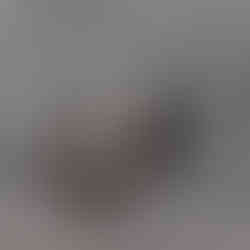






























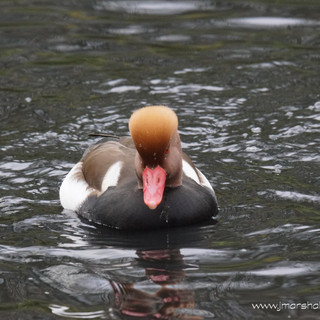









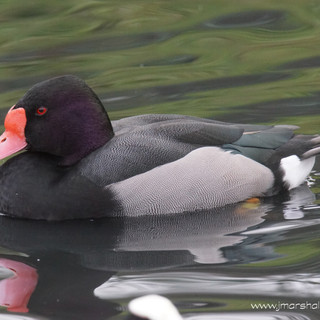


















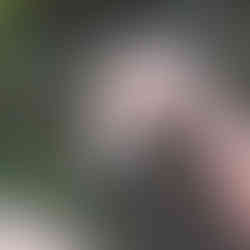


















































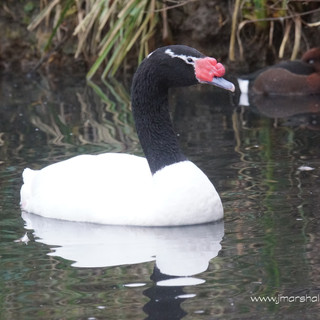



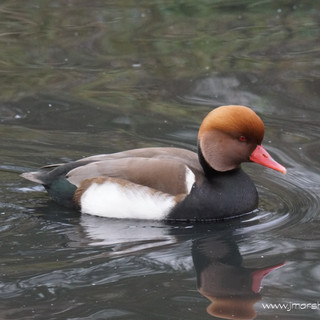






















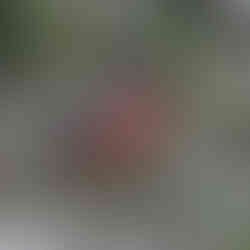












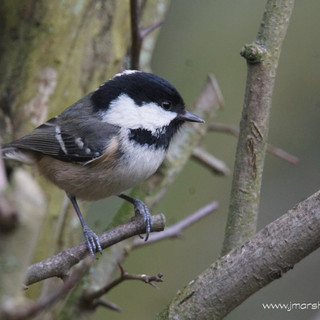











































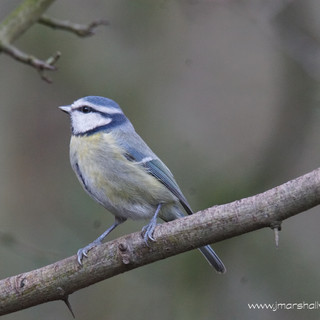



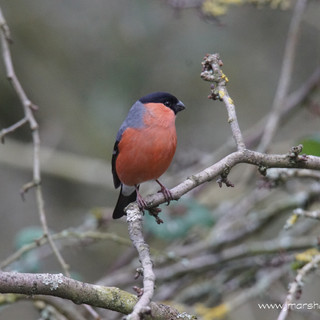







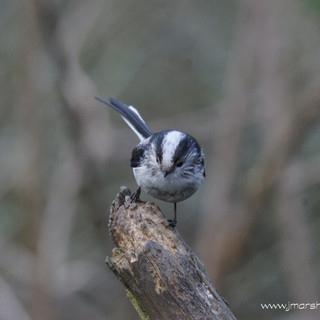








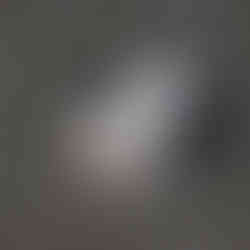










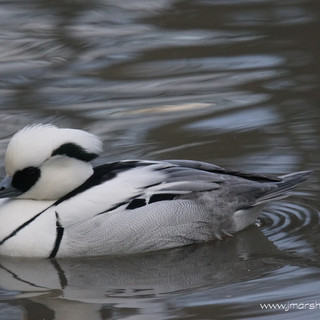






























Comments